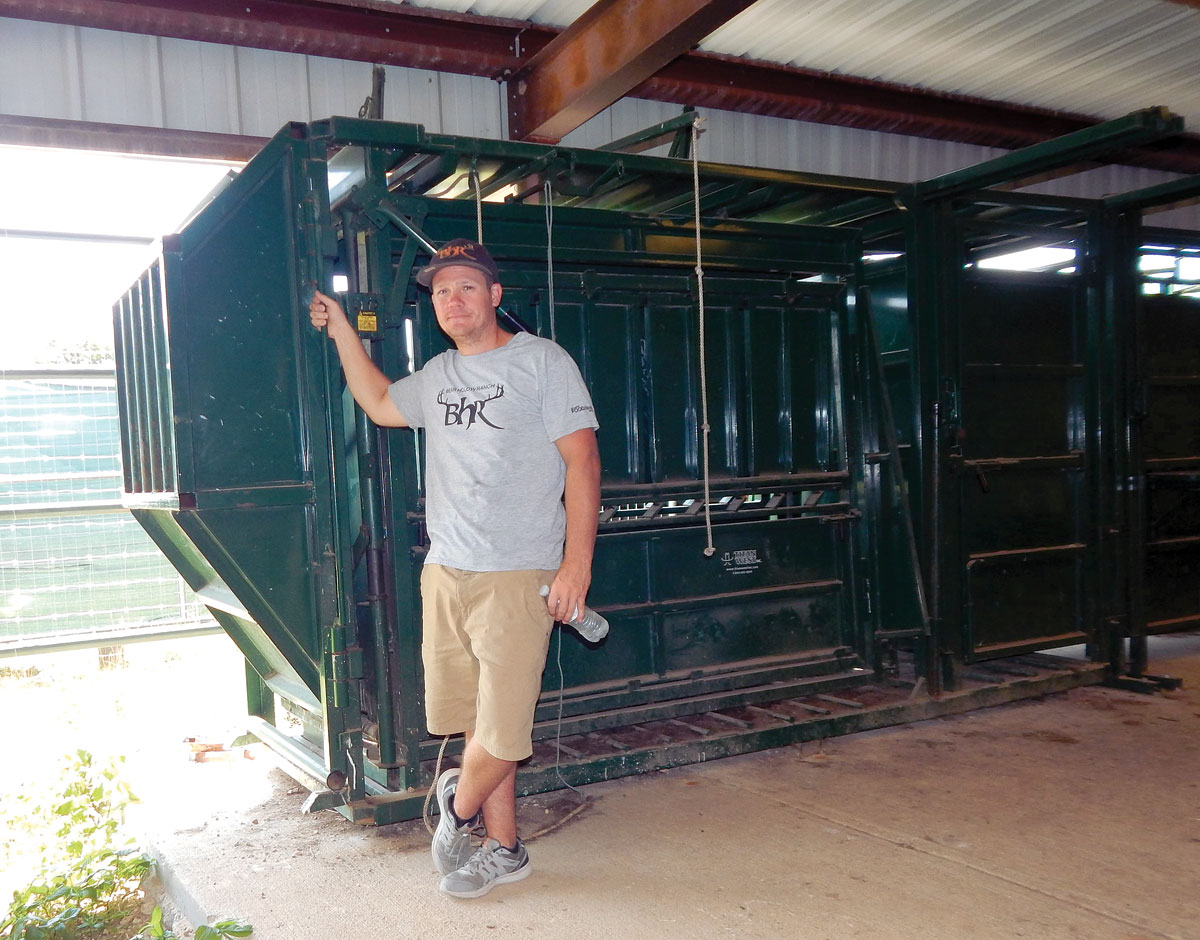
Bear Hollow Ranch has begun offering grass-fed bison meat to customers
Sometimes the most unique surprises are found in the most unlikely places. But then again, the rugged scenery of rural McDonald County, Mo., is the perfect setting for the exotic livestock Bear Hollow Ranch and Preserve.
Owned and operated by Rowdy and Samantha Mott, an enterprising young couple from Northwest Arkansas, the property has quite an intriguing story of its own. It joins other properties in the southeastern corner of the county to create an event venue which offers a unique backdrop of grazing bison, Red Stag deer and elk.
With a degree in marketing from the University of Arkansas, Rowdy noticed a trend towards certified humane and certified grass fed/grass finished meat. The McDonald County location on Highway 90 south of Powell was ideal.
Already owning adjoining property, the couple added the Rockford Grange property with its 900 acres, plus facilities that formerly served as an Olympic training center built by foreign automobile importer and Volkswagen investor, Willard Robertson.
But there’s more to the property’s unique story. Going back to the 1930s, tales of a strange doctor calling himself, Omar Palmer, but by those he cured he was called the “The Wizard of Oto,” after a long-gone community where he practiced his healing arts. He retired to the spot next to a spring which churns out 1,100 gallons of spring water a minute that pours into Big Sugar Creek, building a three-story stone home.
“The Wizard of Oto” retirement home, now Rockford Cottage, is 3,000-square feet of original woodwork, fixtures and ambiance.
Restoring the land to its prime condition has taken a few years and a lot of sweat to support the unique livestock venture taken on by Rowdy and his staff.
Rowdy’s grandpa had livestock and he would help during summer visits, but he admits that helping during summer vacations and actually running an operation with bison is completely different with a significant learning curve. There are limited resources in the region to pick people’s brains. With different growing seasons and grasses to research, Rowdy turned to YouTube to gain knowledge for the care of his unique herds, which also include elk and Red Stag deer.
“The biggest challenge are parasites, possibly more so than with cattle,” Rowdy explains. “But at the same time, I am using zero antibiotics or other treatments.”
The ranch is divided into different large acreage pens with lanes developed to decrease stress on the animals and for ease of movement. All the fence was constructed by Rowdy and his crew, extending nearly 20 miles crisscrossing the property. The high-tensile fence is designed to absorb impact from frighten animals, preventing injury or escape.
Rowdy has been raising bison about eight years, and the elk and Red Stag approximately five years. Most of the animals were purchased from closed herds, allowing Rowdy to maintain them as certified CWD (Chronic Wasting Disease) free, 33 years for the elk and 13 years for the Red Stag deer. All the animals are observed often throughout the day, especially in the summer.
Even with 20 newly constructed ponds, Rowdy prefers to provide fresh water daily to eliminate water-borne diseases through an irrigation system and three wells. Even so, the livestock operation is fairly self-sufficient.
When they work the animals, they run 70 head through at once to get it done all in one day.
“Comparing bison against cattle is like comparing a body builder to a couch potato,” Rowdy states. “Bison are said to be four times as strong as cattle, they are faster, their lung capacity is 40 percent larger than cattle and their fat content is considerably lower.”
This is the first year they started processing bison meat for sale to meat markets and high-end specialty restaurants in Northwest Arkansas and Southern Missouri. It has taken several years to reach the herd production level that allowed for such processing with herd numbers standing at 200 head.
This forecasting has allowed Rowdy to create a demand for bison meat and increase the herd to supply that demand for grass fed bison meat accordingly.
When the animals are processed, nothing goes to waste. European mounts are done using the skulls, the hides are tanned, bone sold for dog chews and antlers are also sold for such creations as lighting fixtures and furniture.
The diversity of the property allows the Mott’s to utilize every aspect; from the rolling hills, to lakes, creek, hay meadows and the various structures.”
“You don’t want to have all your eggs in one basket,” Rowdy states.
The Mott’s entrepreneurial adventures also include other business ventures: Coppermine Lodge, Greystone Estates, and apartments, in addition to, the exotic herds roaming the slopes of Bear Hollow Ranch.







